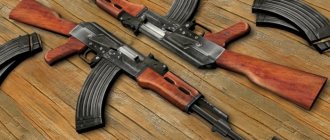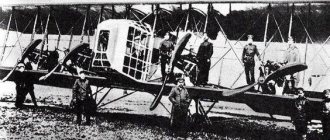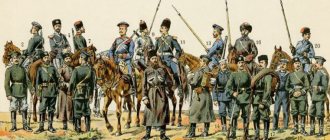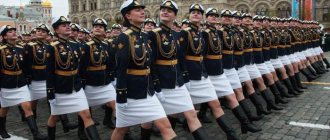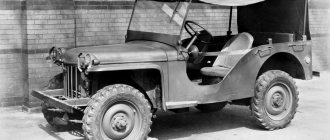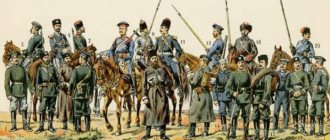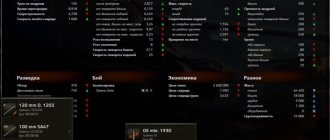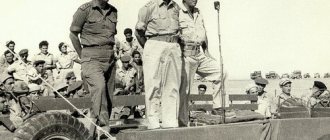The participation of children and adolescents in wars is a common occurrence on the African continent. |
Africa is one of the most unstable regions of the world, where military conflicts have continued for many decades and new ones have broken out. Wars in Africa have complex causes that combine socio-political, economic (resource), national-ethnic, territorial and ideological differences.
Armed conflicts and wars on the African continent are characterized by a significant number of casualties: over the past 40 years, over 5 million people have died in more than 50 military conflicts in Africa, 24 million have been made homeless, and there are 18 million refugees. Perhaps nowhere in the world have conflicts and wars been presented on such a large scale and in variety as here.
Many conflicts are related to local specifics and have historical background. Since 1960, when most countries on the continent gained independence, armed clashes have occurred in more than a third of them. In the 90s of the last century, fighting took place on the territory of more than 15 African states (Angola, Ethiopia, Liberia, Republic of the Congo, Sierra Leone, Mozambique, Somalia, Chad, Mauritania, Senegal, Sudan, Mali, Uganda, Burundi, Rwanda and Zaire (currently the DRC).
Material prepared for the portal “Modern Army” © https://www.modernarmy.ru
General information
From the history of the Ancient World it is known that major wars in Africa were fought already from the third millennium BC. They began with the unification of Egyptian lands. Subsequently, the pharaohs constantly fought for the expansion of their state, either with Palestine or with Syria. Three Punic Wars are also known, which lasted a total of more than a hundred years.
In the Middle Ages, armed conflicts greatly contributed to the further development of aggressive policies and honed the art of war to perfection. Africa experienced three Crusades in the 13th century alone. The long list of military confrontations that this continent was subjected to in the 19th and 20th centuries is simply amazing! However, the most destructive for him were the First and Second World Wars. During one of them alone, more than 100 thousand people died.
Blood on Libyan sand
The armed conflict in Libya began in February 2011 as one of the stages of the so-called “Arab Spring”. Protests broke out in the Libyan provinces demanding the departure of the leader of the Jamahiriya (from the Arabic “jumhuriya” - republic and “jamahir” - the masses) Colonel Muammar Gaddafi , who ruled the country for more than 40 years under a clan and inter-tribal system. The city of Benghazi became a stronghold of Gaddafi's opponents. A military confrontation between government troops and rebels began in the country, the course of which was decisively influenced by direct foreign intervention.
Anti-government protests began on February 15 in Benghazi, the second largest city in Libya. The demonstrators demanded the release of lawyer and human rights activist Fethi Tarbel (representing the interests of the families of those killed during the riot in Abu Slim prison in 1996). After his release, the crowd of protesters did not disperse, but clashed with the police. After this, law enforcement forces dispersed several hundred demonstrators who were chanting slogans against the current regime. Libyan media reported that 14 people were injured as a result of the unrest.
By the end of February, the city of Benghazi came under the control of opponents of the Gaddafi regime. The National Libyan Council was formed in the city - the authority of the revolution, to which all cities that supported supporters of the overthrow of the Libyan leader were supposed to obey. Protests by Gaddafi's opponents also spread to the country's capital, Tripoli. According to international organizations, the authorities brutally suppressed the demonstrations.
The conflict lasted less than a year, and the international community took the side of the protesters. The UN consistently adopted resolutions that made it more difficult for the Gaddafi government to fight the rebels. The measures taken were justified by good intentions - preventing the killing of civilians and included an embargo on the arms trade with Libya, freezing accounts and a ban on foreign travel of the country's leader, his family and a number of close associates.
wikipedia.org / US Navy photo by Mass Communication Specialist 2nd Class Jesse B. Awalt/Released
The next decision of the UN Security Council was to establish a no-fly zone over the country, but in practice, the forces of the Western coalition led by NATO exceeded the mandate of the international organization and began to carry out air strikes on government, civilian and military targets in Libya, thereby fully siding with the rebels.
After a series of airstrikes in the country, a foreign military operation against the Gaddafi regime began. The armed forces of Great Britain, France, the USA, Canada, Belgium, Italy, Spain, and Denmark took part in it. French Air Force planes, taking off from the airbase in Saint-Dizier, struck the first blow on Libyan military equipment in the vicinity of Benghazi.
The armed uprising in Libya lasted about nine months. As a result, the leader of the Libyan Jamahiriya, Muammar Gaddafi, was overthrown and killed on October 20, 2011 near his hometown of Sirte, while hiding from persecution by the opposition.
Enormous damage was caused to the economy of this oil-producing country. The number of deaths is still not known exactly. According to official Libyan statistics, over several months of 2011 the number of victims amounted to 5.5 thousand people. According to expert estimates, 40 thousand people died during the NATO operation. After the death of Gaddafi, a struggle for power began between various clans and armed groups at both the state and regional levels.
Before the formation of the transitional Government of National Unity (GNU), the territory of the once united Libya was divided by the Libyan National Army (LNA) under the leadership of Khalifa Haftar , units that swore allegiance to the illegitimate Government of National Accord (GNA) of Fayez al-Sarraj . There are also groups that control the city of Misurata, the Tuareg and Tuba tribes, the remnants of radicals close in ideology to IS1 or Al-Qaeda1 and dozens of other forces and tribal leaders trying to remain neutral and independent of the major players.
At the beginning of February 2022, following the results of the Libyan Forum for Political Dialogue (LPD), the PNU was formed - a transitional executive body, headed by Abd al-Hamid Dabiba . The Government of National Unity will govern the country until the single voting day - December 24, 2021.
twitter.com/@Dabaibahamid
But even this is not all the consequences of Western countries’ interference in the affairs of a sovereign state. The conflict in Libya led to the exodus of Tuareg tribes south into the Sahara-Sahel region, where European states, namely France, again had to intervene in the affairs of the Dark Continent to correct their own mistakes.
First World War in Africa
The reasons that led to military action in this region were quite compelling. As you know, the First World War in Europe was started by Germany. The Entente countries, opposing its pressure, decided to take away its colonies in Africa, which the German government had recently acquired. These lands were still poorly defended, and given that the British fleet at that time dominated the sea, they were completely cut off from their metropolis. This could only mean one thing - Germany was unable to send reinforcements and ammunition. In addition, the German colonies were surrounded on all sides by territories belonging to their opponents - the Entente countries.
Already at the end of the summer of 1914, French and British troops managed to capture the first small colony of the enemy - Togo. Further invasion of Entente forces into South-West Africa was somewhat suspended. The reason for this was the Boer uprising, which was suppressed only by February 1915. After this, the South African Army began to rapidly advance and in July forced the German troops stationed in South-West Africa to surrender. The following year, Germany had to leave Cameroon, whose defenders fled to the neighboring colony of Spanish Guinea. However, despite such a victorious advance of the Entente troops, the Germans were still able to put up serious resistance in East Africa, where fighting continued throughout the war.
Domino principle
The Bickford fuse was set on fire in neighboring Rwanda and Burundi, where conflict broke out between the Tutsi and Hutu communities. It became the prequel to the great African war.
Evgeny Bashin-Razumovsky Expert on historical issues
It is traditionally believed that Tutsi pastoralists came to Central Africa from the north in the 15th century. More aggressive and united, they brought the Hutu farmers under control. According to another version, both of them spun off from the same community. One way or another, the Tutsis became the dominant group. And they retained their privileged position under the colonialists.
In the 20th century, communities became very mixed. But it was clearly known who was who, since the nationality was indicated in the passport. By 1994, in Rwanda, Tutsis made up 15% of the population, Hutu - 85%.
Tutsi soldiers on the border with Zaire
On the same topic
Massacre with closed eyes: the most monstrous genocide of the 20th century
The population in Rwanda grew rapidly and the country soon fell into a “Malthusian trap.” It faces an overpopulation crisis amid environmental and social problems. Forests were cut down, soil erosion occurred, and prices for the main export product, coffee, fell. In 1989, drought came, and with it the threat of famine.
The country has become crowded.
Tensions were rising in Rwanda—and in neighboring Burundi. And splashed out in bloody splashes.
Initially, they didn’t bother much with weapons - more than five hundred thousand... machetes were brought to Rwanda, which were distributed to the Hutus.
On April 6, 1994, the plane carrying Rwandan President Habyarimana and Burundian interim President Ntaryamira was shot down by missiles while landing at Kigali Airport, the capital of Rwanda. This became a signal - and the Rwandan military committed genocide against the Tutsi community. At the same time, “moderate” Hutus were also killed.
“He who is not with us is against us!”
On the same topic
Rwanda: paradoxes of genocide
Civilian Hutus, armed with machetes and clubs, joined the general madness. Well, there was a certain meaning in the massacre. They didn't hit me based on my passport. Often those whose children went to school barefoot killed those whose children wore shoes.
In seven weeks, about 750 thousand Tutsis were killed (about three-quarters of the entire community - 11% of the country's population). The survivors fled to Uganda. 50 thousand “moderate” Hutus were also killed.
The Tutsi accepted the “beast”. The pendulum swung: they returned with weapons in their hands and punished the offenders. By July 1994, the Tutsi-led Rwandan Patriotic Front had committed self-genocide.
It was the Hutu's turn to flee. About two million fled to neighboring Zaire and Tanzania. The Zairean authorities decided to support them - as a counterbalance to the local Tutsi-Banyamuleng, who were a headache for them.
Further hostilities
The First World War in Africa affected many Allied colonies, as German troops had to retreat into territory belonging to the British Crown. The German army in this region was commanded by Colonel P. von Lettow-Vorbeck. It was he who led the troops in early November 1914, when the largest battle took place near the city of Tanga (the coast of the Indian Ocean). At this time, the German army numbered about 7 thousand people. With the support of two cruisers, the British managed to land a dozen and a half landing transports ashore, but despite this, Colonel Lettov-Vorbeck managed to win a convincing victory over the British, forcing them to leave the shore.
After this, the war in Africa turned into a guerrilla struggle. The Germans attacked British forts and undermined railways in Kenya and Rhodesia. Lettov-Vorbeck replenished his army by recruiting volunteers from among local residents who had good training. In total, he managed to recruit about 12 thousand people.
In 1916, united into one army, British, Portuguese and Belgian colonial troops launched an offensive in eastern Africa. But no matter how hard they tried, they failed to defeat the German army. Despite the fact that the Allied forces significantly outnumbered the German troops, Lettow-Vorbeck was helped to hold out by two factors: knowledge of the climate and terrain. And at this time, his opponents suffered heavy losses, and not only on the battlefield, but also due to illness. At the end of the autumn of 1917, pursued by the Allies, Colonel P. von Lettow-Vorbeck found himself with his army on the territory of the Mozambique colony, which at that time belonged to Portugal.
RESOURCES AS A CAUSE OF WARS ON THE AFRICAN CONTINENT
Developed countries with “advanced” industry and a high standard of living are still dependent on raw materials extracted mainly in the “third world” countries: oil, gas, ferrous and non-ferrous metals, etc.
Distribution of minerals on the African continent |
A comparison of the map of mineral resources and hotspot areas on the African continent as of 2011 clearly shows that most crises are caused by the struggle for access to natural resources. At the same time, armed conflicts can be both intra- and interstate in nature and be provoked by external forces interested in access and use of the region’s natural resources. In this regard, hydrocarbon resources are of particular importance.
The growing demand for raw materials in rapidly developing Asian countries has radically changed the balance of “external” forces in the region. Despite the fact that the African continent is a traditional zone of political and economic interests of France, Great Britain and the United States, China has been paying increased attention to this region in recent years, primarily due to the presence there of a large amount of natural resources it needs. The directions and mechanisms for implementing strategic partnership with the countries of the region set out in the 2006 White Paper of the PRC “China's Policy in Africa” were successfully implemented by the Chinese leadership in practice.
An analysis of statistical data from the International Monetary Fund on trade turnover in African countries showed that Beijing, almost “from scratch,” over the course of ten years, captured the African market for goods and services, displacing Washington from there and significantly weakening the position of Paris. This is facilitated by a policy in which the PRC spares no expense in promoting its economic interests and invests heavily not only in the construction of industrial facilities, but also in the development of the entire accompanying infrastructure of the future partner state, without much ceremony regarding respect for human rights and the level of democratization of society , environmental standards, etc.
At the same time, taking into account the low (relative to such giants as China or India) market capacity of African states, from the point of view of analyzing the prospects for the aggravation of existing and the emergence of new conflicts in the region, a more informative parameter is the structure of imports of raw materials by leading external players. An analysis of the dynamics of changes in this parameter shows that, although the United States still leads in terms of import volumes from the African region, China has come close to them, significantly ahead of France, to which it was inferior back in 2005.
This indicates the presence of a powerful conflict factor in the region, which will remain relevant both in the medium and long term. Moreover, there is reason to believe that the events of the “Arab Spring” of 2011 are connected, among other things, with the strengthening of Beijing’s position in North Africa, and thus with the aggravation of competition between China and other major powers for dominance in this region. It should be noted that it was for this reason that France initiated the launch of a military operation against Libya in March 2011.
The growth rate of China's exports of raw materials from Africa is forcing the United States to pursue a more active policy towards the countries of the region to defend its economic interests. Paris also focused its efforts on creating conditions that would allow French companies to have access to the development of oil and gas fields, as well as promote the products of their military-industrial complex on the African market.
End of hostilities
The First World War was drawing to a close. Africa and Asia, as well as Europe, suffered great human losses. By August 1918, German troops, surrounded on all sides, avoiding encounters with the main enemy forces, were forced to return to their territory. By the end of that year, the remnants of Lettow-Vorbeck's colonial army, consisting of no more than 1.5 thousand people, ended up in Northern Rhodesia, which at that time belonged to Britain. Here the colonel learned of Germany's defeat and was forced to lay down his arms. For his courage in battles with the enemy, he was greeted at home as a hero.
Thus ended the First World War. In Africa, it cost, according to some estimates, at least 100 thousand human lives. Although the fighting on this continent was not decisive, it continued throughout the war.
The British go on the offensive
Italian troops were able to advance west only 115 km, reaching the town of Sidi Barrani, where they camped for two months. Meanwhile, Wavell, having only two full-fledged divisions, on December 9 himself went on the offensive, which led to the decisive defeat of Graziani's troops and the withdrawal of the Italians from Sidi Barrani. 38 thousand Italian soldiers were captured, 400 guns and 50 tanks became a trophy for the British, who lost 133 people. Three weeks later the British offensive was resumed. On January 5 and 22, 1941, the cities of Bardiya and Tobruk, located on Libyan territory, capitulated. This time, 75 thousand Italians were captured, 700 guns and 207 tanks were captured. But the British did not stop there either. According to the plan developed by the British commander Richard O'Connor, one of the armored divisions carried out a raid across the desert over 250 km long and cut off the Italians' escape route at the Libyan port of Benghazi. On February 5, Graziani's army was defeated during a day-long battle, in which the Italians lost 100 tanks and the British only 3. The British fleet also achieved major success in 1940 in the Mediterranean. Admiral Cunningham pursued the Italian ships everywhere, regardless of their numbers. The first major clash occurred on July 10. During it, the British managed to hit an Italian battleship from a record distance of 13 miles (about 23 km). The Italians were so shocked by this that they withdrew from the battle. Even more impressive was the success of the British on November 11, when planes launched from the aircraft carrier Illustrious torpedoed three battleships stationed at the main base of the Italian fleet of Taranto. Three of them sank to the bottom. This was the first time large warships were sunk from the air in combat.
Capture of an Italian tank in the Libyan desert. 1941
World War II
As you know, large-scale military actions launched by Nazi Germany in the 30-40s of the last century affected not only the territory of Europe. Two more continents were not spared by the Second World War. Africa and Asia were also drawn, albeit partially, into this enormous conflict.
Unlike Britain, Germany by that time no longer had its own colonies, but always laid claim to them. In order to paralyze the economy of their main enemy - England, the Germans decided to establish control over North Africa, since this was the only way to get to other British colonies - India, Australia and New Zealand. In addition, a likely reason that pushed Hitler to conquer North African lands was his further invasion of Iran and Iraq, where there were significant oil deposits controlled by Britain.
Start of hostilities
The Second World War in Africa lasted for three years - from June 1940 to May 1943. The opposing forces in this conflict were Britain and the United States on one side, and Germany and Italy on the other. The main fighting took place in Egypt and the Maghreb. The conflict began with the invasion of Ethiopia by Italian troops, which significantly undermined British dominance in the region.
Initially, 250 thousand Italian troops took part in the North African campaign, and later another 130 thousand German soldiers, who had a large number of tanks and artillery pieces, arrived to help. In turn, the allied army of the USA and Britain consisted of 300 thousand American and more than 200 thousand British troops.
NIGERIA IS A POTENTIAL AREA OF CONFLICT
It is possible that in the near future Western countries will pay attention to Nigeria , which has such natural resources as oil, natural gas, tin, iron ore, coal, lead, zinc and niobium, which is used in the manufacture of: aircraft parts; claddings for uranium and plutonium fuel elements; containers for liquid metals; parts of electrolytic capacitors; “hot” electronic fittings (for radar installations) and powerful generator lamps; corrosion-resistant equipment in the chemical industry. It is also used in cryotrons - superconducting elements of computers. Niobium is also known for its use in the accelerating structures of the Large Hadron Collider.
Nigeria's proven oil reserves amount to more than 37 billion barrels and gas reserves - 5 trillion cubic meters, which places this country second in Africa after Libya in oil and seventh in the world in gas. At the same time, Libya and Nigeria are significantly ahead of the rest of the African oil group: Angola, which ranks third, has only 1.8 billion tons; Algeria - 1.5 billion tons; Sudan - 0.9.
It is these riches that attract the attention of “developed democracies” countries. Control over them in the context of a general decline in natural resource reserves is becoming not only an urgent task, but also a “basic necessity.” That is why in this region both the organization of coups d'états and terrorist attacks, and direct military aggression are possible.
Material prepared for the portal “Modern Army” © https://www.modernarmy.ru
Further developments
The war in North Africa began with the fact that in June 1940 the British began to launch targeted attacks on the Italian army, as a result of which it immediately lost several thousand of its soldiers, while the British lost no more than two hundred. After such a defeat, the Italian government decided to give command of the troops to the hands of Marshal Graziani and was not mistaken with the choice. Already on September 13 of the same year, he launched an offensive that forced British General O'Connor to retreat due to his enemy's significant superiority in manpower. After the Italians managed to capture the small Egyptian town of Sidi Barrani, the offensive was suspended for three long months.
Unexpectedly for Graziani, at the end of 1940, General O'Connor's army went on the offensive. The Libyan operation began with an attack on one of the Italian garrisons. Graziani was clearly not prepared for such a turn of events, so he was unable to organize a worthy rebuff to his opponent. As a result of the rapid advance of British troops, Italy lost its colonies in northern Africa forever.
The situation changed somewhat in the winter of 1941, when the Nazi command sent General Rommel's tank formations to help its ally. Already in March, the war in Africa broke out with renewed vigor. The combined army of Germany and Italy dealt a strong blow to the British defenses, completely destroying one of the enemy armored brigades.
Long before the tragedy
In 1960, the Congolese gained independence from Belgium and gained territory with major deposits of diamonds, gold, tungsten, cobalt, copper, uranium and tantalum. By the beginning of the war, dictator Sese Seko Mobutu had ruled Zaire (as the Democratic Republic of Congo was called from 1971 to 1997). Under him, in the second largest African country by area, people lived quite peacefully, but poorly. All the funds provided by Western countries fell into the bottomless pockets of the president and his entourage.
The quiet life ended in the early 90s, when a brutal civil war began in neighboring Rwanda between the Hutu and Tutsi peoples, which quickly escalated into genocide, as a result of which about a million Tutsis were exterminated.
Kabila and the Alliance of Democratic Forces for the Liberation of the Congo, led by him, were supported by Uganda, Rwanda, Angola and Burundi. Under their pressure, Mobutu's regime fell, he himself fled to Morocco, where he soon died.. Photo: David Guttenfelder / AP
Those who managed to escape death poured into Zaire. Together with them, Hutu representatives involved in the genocide moved to their neighbors under the guise of refugees. They continued to fight each other on the territory of Zaire. This played into the hands of President Mobutu's opponents. The country's main opposition leader, Laurent-Désiré Kabila, who was called an ally of Che Guevara and a venerable partisan leader, led the uprising.
Neighbors on the African continent had to choose which side to take in this conflict. Kabila and the Alliance of Democratic Forces for the Liberation of the Congo, led by him, were supported by Uganda, Rwanda, Angola and Burundi. Under their pressure, Mobutu's regime fell, he himself fled to Morocco, where he soon died. After 32 years in power, he left the country with a broken economy, $14.5 billion in debt, a corrupt political system and inflation of 9,800 percent.
It would seem that with the change of power in the country, the war should have ended, but everything went according to a different scenario.
End of World War II
In November of the same year, the British made a second attempt at a counteroffensive, launching Operation Crusader. They even managed to recapture Tripoletania, but in December they were stopped by Rommel’s army. In May 1942, a German general dealt a decisive blow to the enemy defenses, and the British were forced to retreat deep into Egypt. The victorious offensive continued until the Allied 8th Army interrupted it at Al Alamein. This time, despite all efforts, the Germans failed to break through the British defenses. Meanwhile, General Montgomery was appointed commander of the 8th Army, who began to develop another offensive plan, while successfully continuing to repel the attacks of Nazi troops.
In October of the same year, British troops launched a powerful attack on Rommel's military units stationed near Al-Alamein. This entailed the complete defeat of two armies - Germany and Italy, which were forced to retreat to the borders of Tunisia. In addition, the Americans came to the aid of the British, landing on the African coast on November 8. Rommel made an attempt to stop the Allies, but it was unsuccessful. After this, the German general was recalled to his homeland.
Rommel was an experienced military leader, and his loss meant only one thing - the war in Africa ended in complete defeat for Italy and Germany. After this, Britain and the United States significantly strengthened their positions in this region. In addition, they threw the liberated troops into the subsequent capture of Italy.
Suez crisis
The eternal rivals of the Fifth Republic and the largest empire of our time - Great Britain - have demonstrated the ability to learn from the mistakes of others. Observing the difficulties that Paris faced in the matter of decolonization, London chose its own path and tried to carry out this difficult process with the least losses.
All pieces of the British Empire gained independence peacefully, without protracted wars, serious financial costs and unnecessary deaths. However, this did not protect Her Majesty’s subjects from participating in armed conflicts. And the most notable of them was the Suez crisis.
The hot phase of the conflict occurred at the end of 1956 and the beginning of 1957, and the main reason was the determination of the status of the Suez Canal Administration. It was opened in 1869 and belonged to Egypt (at that time part of the Ottoman Empire) and France, which implemented the project, but in the 1870s, under Prime Minister Benjamin Disraeli , Great Britain bought the Egyptian part of the shares (44%) from the government, having problems paying off debts.
The canal was initially of great strategic value to Britain, as it greatly simplified communication with remote parts of the empire. In the 20th century, the canal gained additional importance because it made the route from Europe to the oil fields of the Persian Gulf several times shorter.
However, in the middle of the 20th century, with the growth of nationalism in Egypt, contradictions began to appear in the relations between the two countries, which concluded an agreement in 1936, according to which the African state received full independence, but British troops remained in the country until 1956. The result of which was the nationalization of the Suez Canal by the current government with the following wording:
“Egypt guarantees the unimpeded passage of ships, with the exception of Israeli ones...”
This tied the hands of Britain and France in taking emergency measures to resolve the situation, and they made a deal with Israel, whose rights were infringed by Egypt's unilateral actions, and which had grounds for discontent. Israel followed the lead as it pursued its goals and started a war in which the European powers supported it.
The conflict was short-lived and ended in victory for Israel and its European allies, but it was tinged with defeat. The Suez Canal remained under Egyptian control, Anglo-French forces were withdrawn, the prime ministers of the two countries resigned, and the first UN peacekeeping contingent in history was sent to the region. Again, the Europeans left behind chaos, because the Arab-Egyptian conflict was never resolved, and it remains so to this day.
Global Look Press / KEYSTONE Pictures USA / ZUMAPRESS.com
After the Wind of Change died down, Western powers continued to influence the fate of the Dark Continent. True, without direct participation in the conflict by military contingents, but only by providing support to one side or another of the conflict, often in opposition to the socialist bloc led by the Soviet Union. And after the fall of the Iron Curtain and the end of the Cold War, the African continent faded into the background for a certain time, giving way to the palm of interest of the largest powers in the Middle East.
During this time, the continent experienced several horrific conflicts, such as the genocide in Rwanda and one of the bloodiest and longest wars in African history, in the Democratic Republic of Congo. However, interest returned when the right moment came, namely, inter-tribal conflict in the country that began the modern era of wars involving European states in Africa - Libya. History repeats itself again.
Second half of the 20th century
The end of World War II did not end the confrontation in Africa. One after another, uprisings broke out, which in some countries escalated into full-scale hostilities. Thus, once a civil war breaks out in Africa, it can last for years and even decades. An example of this is intrastate armed confrontations in Ethiopia (1974-1991), Angola (1975-2002), Mozambique (1976-1992), Algeria and Sierra Leone (1991-2002), Burundi (1993-2005), Somalia (1988). ). In the last of the above countries, the civil war has not yet ended. And this is only a small part of all the military conflicts that previously existed and continue to this day on the African continent.
The reasons for the emergence of numerous military confrontations lie in local specifics, as well as in the historical situation. Since the 60s of the last century, most African countries gained independence, and in a third of them armed clashes immediately began, and in the 90s, fighting took place on the territory of 16 states.
The Great African War. Why five million people died
Twenty years ago, in August 1998, one of the bloodiest wars in modern history began. The huge number of victims, nine participating countries and the incredible brutality shown by all sides in the conflict made it possible to call this armed conflict the Great African War. Considering that events on the Dark Continent are rarely covered in the press, the details of this terrible war are poorly known. After all, from a Eurocentric perspective, the death of hundreds of British or French people is considered a tragedy, while the death of tens of thousands of Africans remains practically unnoticed.
The events discussed below unfolded on the territory of the second largest country on the African continent - Congo, with its capital in Kinshasa. The territory of this state is very rich in natural resources, forests, and fresh water. Congo has enormous potential for development, since the land of this large country contains not only diamonds, copper and gold, but also coltan, which is very necessary for modern industry. The long-suffering state gained independence in 1960. Before this, the Congo was a Belgian colony. At one time, Arthur Conan Doyle wrote a journalistic book “Crimes in the Congo” about the actions of the Belgian colonialists. Patrice Lumumba and Moise Tshombe, the African campaign of Ernesto Che Guevara - this is also the history of the Congo. In 1965, Chief of the General Staff Joseph-Désiré Mobutu seized power in the country.
A former sergeant of the Belgian colonial troops, and then a journalist for one of the capital's newspapers, Mobutu, after the country declared independence, made a dizzying career and became one of the most influential political figures in the Congo. Having come to power, he soon renamed the Congo to Zaire - the name the country bore from 1971 to 1997, and he himself adopted the traditional African name Mobutu Sese Seko Kuku Ngbendu wa for Banga. The main ideology of Mobutu, who awarded himself the title of marshal in 1983, was, of course, money, but he officially declared his commitment to traditional African values and beliefs. Since Mobutu was an outspoken opponent of communism and Soviet influence in Africa, he enjoyed great support from the West. Americans and Europeans turned a blind eye to failed economic policies, repression of the opposition, and incredible levels of corruption.
Until the early 1990s, the West needed Mobutu as one of Africa's most committed anti-communist leaders. Zaire under Mobutu supported anti-communist and anti-Soviet movements in neighboring countries, most notably Angola. However, the weakening and subsequent collapse of the Soviet Union in 1991 led to changes in the policies of the United States and Western countries on the African continent. Such odious politicians as Mobutu have lost their significance, moreover, in the changed situation they have rather discredited the West and its declared values. But if interest in Mobutu was lost, Zaire's rich natural resources continued to attract the attention of a variety of interested parties, primarily American and European corporations.
The political situation in Zaire has never been stable. Periodically, the country was rocked by armed conflicts; the central authorities could not control part of its territory even in the best years. The situation in the country became even more complicated after the outbreak of civil war in neighboring Rwanda. The two Tutsi and Hutu peoples, who make up the main population of Rwanda and have historically been at odds with each other, entered into a life-and-death war. Quite quickly, the Hutus won a victory, slaughtering up to a million Tutsis. Hundreds of thousands of Tutsi refugees poured into neighboring Zaire. However, then the Rwandan Patriotic Front, formed by the Tutsis, came to power in Rwanda, after which the Hutu, fearing retribution, fled to Zaire. The war between the two Rwandan peoples continued on the territory of the neighboring country.
The Tutsi who were in Zaire rebelled against Mobutu and captured a number of cities, including the capital of the South Kivu province, Bukavu, and the capital of North Kivu, Goma. This situation was immediately taken advantage of by the Congolese opposition - the Alliance of Democratic Forces for the Liberation of the Congo, which was headed by Laurent Désiré Kabila, a partisan leader with thirty years of experience, a former comrade-in-arms of Ernesto Che Guevara during his African campaign. For twenty years, from 1967 to 1988. Kabila controlled the mountainous regions of South Kivu province, west of Lake Tanganyika, where he created his own “people's revolutionary state”, which existed due to the extraction and smuggling of minerals, predatory raids and military assistance from China (Kabila was considered a Maoist, pro-Chinese politician). In 1988, Kabila mysteriously disappeared, and eight years later, in 1996, he reappeared and rebelled against Mobutu. Kabila was supported by neighboring countries - Burundi, Rwanda and Uganda, which had their own claims against Mobutu. Therefore, already in May 1997, Kabila won a complete victory over Mobutu, who fled Zaire. On May 20, 1997, Laurent Kabila entered the capital Kinshasa and proclaimed himself the new president of the country. Zaire was renamed the Democratic Republic of the Congo (DRC).
However, having strengthened his position, the new head of state actually continued the policies of Mobutu, whom he had overthrown. Laurent Kabila feared that the presence of more than a million Tutsis in the Congo threatened his power and therefore, on July 27, 1998, he announced the expulsion of all foreigners from the country and the disbandment of parts of the Congolese army staffed by Tutsis. On August 2, 1998, dissatisfied with this decision, Tutsi soldiers serving in the 10th brigade of the Congolese army rose up in the city of Goma in the east of the country and literally captured the cities of Uvira and Bukavu in just one day. The uprising was led by Major General Jean-Pierre Ondekan, who began his service in Mobutu's army, but then went over to Kabila's side. Ondekan, an ethnic Tutsi, quickly found his bearings and realized that he had a chance to become the political leader of the territories occupied by Tutsi soldiers.
A Tutsi army of 60 thousand people moved towards the capital of the country, Kinshasa. On August 3, Colonel James Cabarere, at the head of a Tutsi detachment, hijacked a transport plane in the city of Goma and flew to the airbase in the city of Quitona, where about 3 thousand more Tutsi soldiers were stationed. Thus, the second Western Front was opened against the capital of the country. Cabarere's offensive was so successful that a frightened Laurent Kabila turned to the government of neighboring Angola for help. Already on August 31, Angolan troops managed to oust the Cabarere rebels from the port of Matadi, and on September 1 liberate Quitona.
Having secured the support of the Hutu and neighboring Angola groups that hated the Tutsi, Kabila began to seek the intercession of other African states. The Congolese president was supported by Namibia, Zimbabwe, Sudan and Chad. For Angola, participation in the war on Kabila’s side was important in terms of further struggle with its own rebel group UNITA, Namibia and Zimbabwe entered the war as long-time allies of Angola, and Sudan sided with Kabila out of solidarity, seeking to harm its longtime enemy, Uganda.
Kabila was also supported by distant North Korea, which sent more than 400 military specialists and instructors, as well as a large amount of weapons. The reasons for North Korean sympathy for Kabila were also clear - it was not so much the pseudo-communist phraseology of the new Congolese president as the natural resources of the Congo - uranium and cobalt - that interested the DPRK. Libya also provided assistance to Kabila, trying to actively participate in Central African politics. In turn, Burundi, Rwanda, Uganda, as well as the Angolan rebel group UNITA, sided with the Tutsi rebels. On November 6, 1998, units of the Rwandan armed forces invaded the Congo, and troops from Zimbabwe and Namibia entered the southern provinces.
Thus, in the fall of 1998, the civil war in the Congo ceased to be an intrastate armed conflict. After the entry of nine neighboring countries into it, it became known as the Great African War (African World War). Fierce fighting broke out in the east and south of the DRC, with not only the rebels and Kabila government troops fighting each other, but also the armies of neighboring African states. The intervention of Angola, Namibia, Zimbabwe, Sudan and Chad on Kabila's side allowed the latter to maintain control over the capital and its environs and prevent the advance of rebel troops. However, it was also not possible to defeat the rebels, for whom the troops of Uganda, Rwanda and Burundi stood up. The war became protracted, and the civilian population of the Congo suffered the most from the fighting, deprived of the opportunity to defend themselves and finding themselves the object of violence, robbery and murder by all parties to the conflict.
The terrible “hallmark” of the Great African War was the incredible cruelty that rebels, government soldiers, and foreign soldiers showed to civilians. According to international organizations, more than half a million women were raped during the Congolese war. Militants and soldiers did not spare even little girls, raping them and often killing them after the violence. Capturing villages inhabited by “foreign” peoples, the militants ripped open the bellies of pregnant women, killed old people, and dealt with clergy. The usual cruelty of African militants was supplemented by the desire to mortally frighten the population of the occupied territories so that they would not even think of resisting, and the drug intoxication in which many fighters of both rebel and government forces were.
The shocked world community put pressure on the leaders of the African states involved in the war to quickly begin negotiations to end the hostilities. Ultimately, on June 21-27, 1999, negotiations between the parties to the conflict took place in the Zambian capital of Lusaka, and on July 10, 1999, the leaders of Congo, Angola, Namibia, Zimbabwe, Zambia, Uganda and Rwanda signed the Lusaka Agreement, according to which, within 24 hours after its conclusion, the parties pledged to cease all military operations and further military movements, and also agreed to the deployment of the UN International Peacekeeping Force.
However, despite the agreement signed in Lusaka, fighting in the Congo continued, albeit on a smaller scale. Thus, on June 5-10, 2000, a six-day war took place between the armies of Rwanda and Uganda in the Congolese city of Kisangani. On January 16, 2001, during a meeting of the military council, the President of the Democratic Republic of the Congo, Laurent Kabila, was assassinated.
His 29-year-old son Joseph Kabila became the new head of state. He continued to operate against the rebels until a peace agreement was signed between the DRC and Rwanda in July 2002. The agreement was signed on behalf of the DRC by Joseph Kabila, and on behalf of Rwanda by President Paul Kagame. The Congolese leadership pledged to recognize Tutsi political organizations in the country as legal and to disarm the Kinshasa-controlled Hutu militant groups, and the Rwandan leadership agreed with the demand for the withdrawal of the 20,000-strong Rwandan armed forces from the territory of the Congo. Congolese Tutsi leader Major General Jean-Pierre Ondekan was appointed Minister of Defense in the new interim government of the Democratic Republic of the Congo. He held this post until 2005.
In the Great African War, at least 4 to 5 million people died, with the largest number of casualties among civilians. People not only died at the hands of militants, but also died from hunger and numerous epidemics, since there was no normal medical care in the war-torn country. But even the agreement between Kabila and Kagame did not bring peace to Congolese soil. In 2004-2008 and 2012-2013. Armed conflicts again took place in Kivu, the cause of which was the actions of Tutsi rebels. The second conflict in Kivu led to further military clashes between Congo and Tutsi forces, on the side of which were Uganda and Rwanda.
Armed clashes and killings of civilians continue on Congolese soil to this day. Millions of Congolese people have become refugees, fleeing their homes. There are at least 70 rebel armed groups operating across the country, fighting among themselves and against government forces. The situation is aggravated by the terrible poverty of the population and the lack of any work even in relatively large cities of the country. Meanwhile, in Congo, rich in natural resources, the birth rate is very high even by African standards, the country’s population is young and active, but war and crime remain almost the only ways to earn at least some money here.
Modern Wars
In the current century, the situation on the African continent has remained virtually unchanged. A large-scale geopolitical reorganization is still ongoing here, under the conditions of which there can be no talk of any increase in the level of security in this region. The difficult economic situation and acute lack of finances only aggravate the current situation.
Smuggling, illegal supplies of weapons and drugs flourish here, which further aggravate the already rather difficult crime situation in the region. Moreover, all this is happening against the backdrop of extremely high population growth, as well as uncontrolled migration.
Algeria
This country, located in North Africa directly opposite the Mediterranean coast of France, was the crown jewel of the French colonial empire. More French settlers lived here than in any other colony of the Fifth Republic. The oil-bearing regions of the Algerian Sahara were developed by French oil companies. The first tests of the French atomic bomb took place in the Sahara.
In 1954-1962, Algeria was not a colony, but an overseas department, i.e. part of France. One and a half million European immigrants lived there and were associated with this country for several generations.
Among the reasons for the conflict of 1954-1962, one can highlight the dissatisfaction of the indigenous population of Algeria with the economic policy of the French government in relation to this department. The colonial administration violated all the democratic freedoms of the Algerian people, giving priority in all decisions to the French of non-Arab origin. The economic complexity of the situation is confirmed by the following facts, for example: 1/3 of Algerian peasants were deprived of land, unemployment in cities became widespread, the indigenous population was discriminated against when hiring and when paying for work equal to Europeans.
Researchers date the aggravation of the situation and the beginning of the conflict to November 1, 1954, when the uprising of the Algerian people against French rule began. The authorities of the Fifth Republic took a number of measures to suppress it immediately. Large formations of the French army were transferred to Algeria, which brutally dealt with the civilian population, destroyed villages and carried out mass deportations of residents, trying to isolate them from the rebels. However, despite the superior forces of the colonialists thrown against the rebels, the uprising gradually spread to all of Algeria. Following the poor peasantry of the mountainous regions, the uprising was supported by the urban petty bourgeoisie, the proletariat, and students, and it gradually grew into an anti-colonial national democratic revolution.
Global Look Press /
This war was completely lost by the Europeans, and the consequences were devastating. According to official data alone, France lost 25 thousand people killed and 60 thousand wounded, and Algeria’s losses amounted to more than half a million people. The Fifth Republic is still paying for this war, and the current leadership continues to apologize to the leadership and residents of the North African country.
And it was she who pushed Paris to grant independence to its other colonies. So only in 1960, which was later called the “year of Africa,” the Elysee Palace lost more than 10 of its colonies, which became independent.
Attempts to localize conflicts
Now it seems that the war in Africa is never-ending. As practice has shown, international peacekeeping, trying to prevent numerous armed clashes on this continent, has proven to be ineffective. For example, we can take at least the following fact: UN troops participated in 57 conflicts, and in most cases their actions had no impact on their end.
As is commonly believed, the bureaucratic slowness of peacekeeping missions and poor awareness of the rapidly changing real situation are to blame. In addition, UN troops are extremely small in number and are withdrawn from war-torn countries even before a capable government begins to form there.
Beginning of the confrontation
The second half of the 20th century was an era of local conflicts, on the fields of which the interests of two superpowers collided. In the 1970s, Africa followed Southeast Asia. In 1974, the Portuguese regime built by Salazar fell, and popular liberation movements were victorious in a number of Portuguese colonies.
Several anti-colonial organizations have emerged in Angola: the Popular Movement for the Liberation of Angola (MPLA), the National Front for the Liberation of Angola (FNLA) and the National Union for the Total Independence of Angola (UNITA). The leaders of these cells - Agostinho Neto, Holden Roberto and Jonas Savimbi had different views on the liberation struggle and the political fate of an independent Angola.
Agostinho Neto and Fidel Castro. (argmedios.com.ar)
Active actions by representatives of various Angolan organizations became possible with the beginning of the “Carnation Revolution” in the metropolis. Freedom fighters in Africa began to build up their forces and weapons: the withdrawal of the Portuguese was already obvious to everyone, and weighty arguments were required to promote their ideas. FNLA and UNITA accepted material and military assistance from the USA, China and South Africa. The MPLA, in accordance with its pro-communist orientation, turned to Moscow and Havana.
Holden Roberto. (Wikimedia Commons)
On March 25, 1975, the regular army of Zaire invaded Angola and helped Holden Roberto take control of the city of Carmone, where a new government was formed. On August 5, the South African army crossed the Angolan border, ostensibly to protect dams from the Ruacana-Calueca hydroelectric complex. The ring around the capital, where mainly MPLA supporters were, was shrinking.
On November 4, 1975, the Cuban government responded to Agostinho Neto's request for help. Then came the recognition of the USSR. Tension between the parties inevitably grew. The Cubans immediately sent 480 military specialists to Luanda, who were ordered to organize military training centers and create 16 infantry battalions, as well as 25 mortar and anti-aircraft batteries. Medical teams, 115 trucks and various communications equipment were also sent.
Cuban tank crews in Angola. (topwar.ru)

